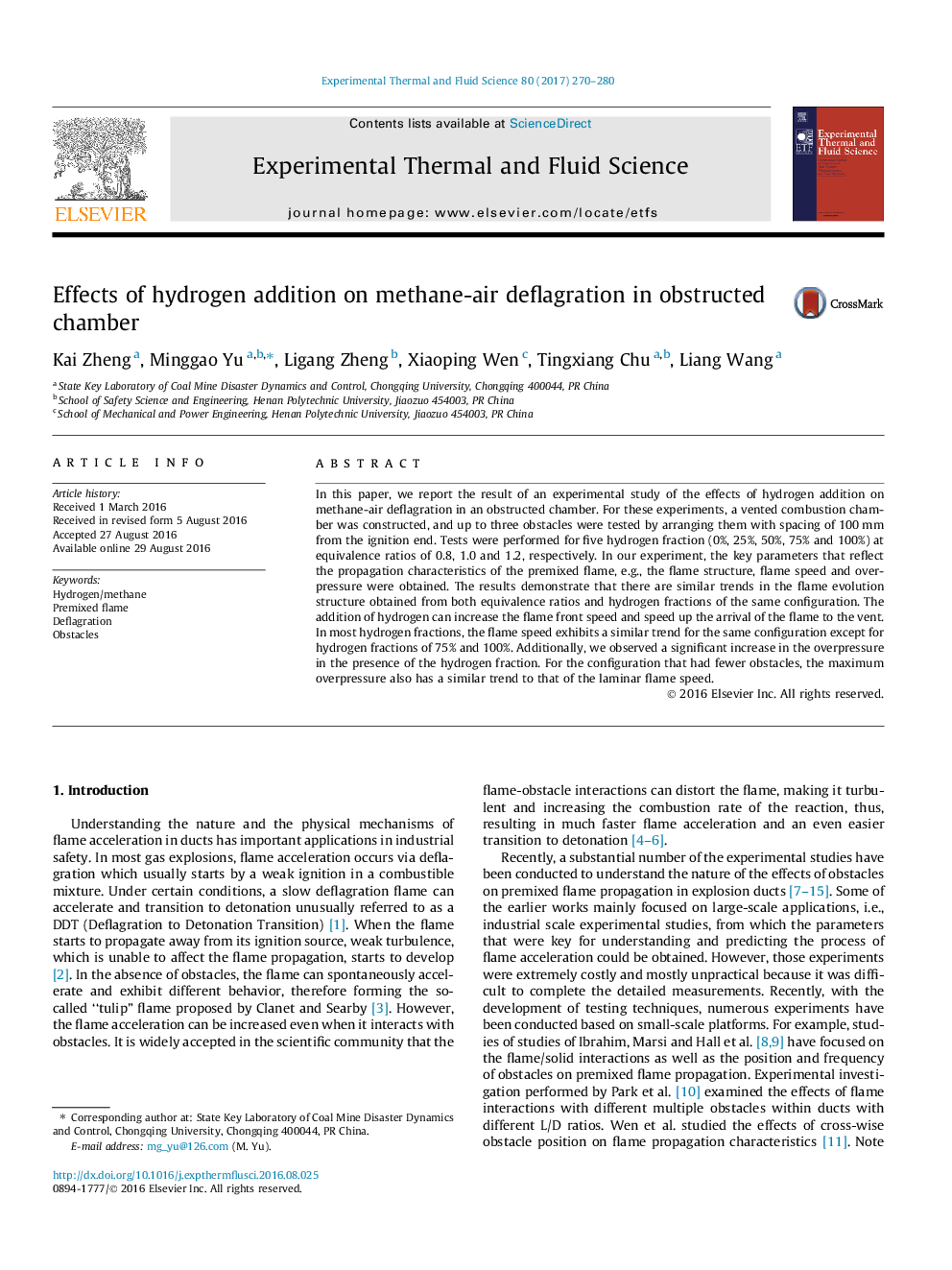| Article ID | Journal | Published Year | Pages | File Type |
|---|---|---|---|---|
| 7051964 | Experimental Thermal and Fluid Science | 2017 | 11 Pages |
Abstract
In this paper, we report the result of an experimental study of the effects of hydrogen addition on methane-air deflagration in an obstructed chamber. For these experiments, a vented combustion chamber was constructed, and up to three obstacles were tested by arranging them with spacing of 100Â mm from the ignition end. Tests were performed for five hydrogen fraction (0%, 25%, 50%, 75% and 100%) at equivalence ratios of 0.8, 1.0 and 1.2, respectively. In our experiment, the key parameters that reflect the propagation characteristics of the premixed flame, e.g., the flame structure, flame speed and overpressure were obtained. The results demonstrate that there are similar trends in the flame evolution structure obtained from both equivalence ratios and hydrogen fractions of the same configuration. The addition of hydrogen can increase the flame front speed and speed up the arrival of the flame to the vent. In most hydrogen fractions, the flame speed exhibits a similar trend for the same configuration except for hydrogen fractions of 75% and 100%. Additionally, we observed a significant increase in the overpressure in the presence of the hydrogen fraction. For the configuration that had fewer obstacles, the maximum overpressure also has a similar trend to that of the laminar flame speed.
Related Topics
Physical Sciences and Engineering
Chemical Engineering
Fluid Flow and Transfer Processes
Authors
Kai Zheng, Minggao Yu, Ligang Zheng, Xiaoping Wen, Tingxiang Chu, Liang Wang,
